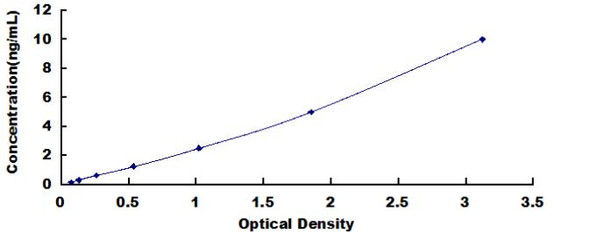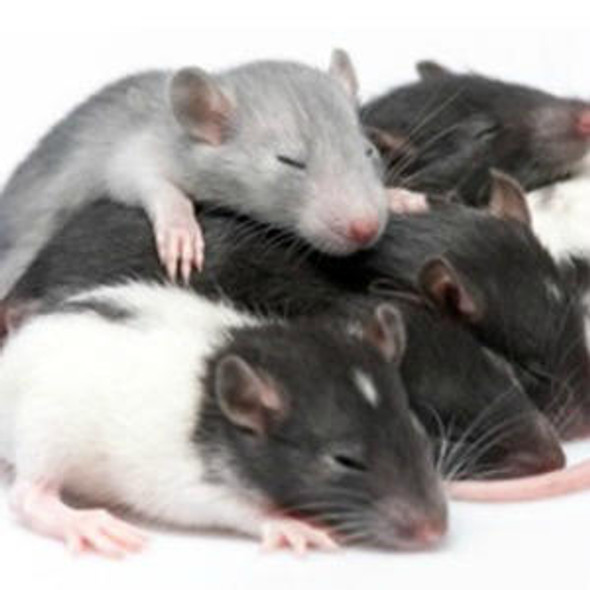Description
Human Hepatocyte nuclear factor 1-beta (HNF1B) ELISA Kit
The Human Hepatocyte Nuclear Factor 1 Beta (HNF1B) ELISA Kit is a highly sensitive and specific assay designed for the accurate detection of HNF1B levels in human serum, plasma, and cell culture supernatants. HNF1B is a key transcription factor involved in regulating gene expression in the liver, pancreas, and kidney. Dysregulation of HNF1B has been linked to various health conditions, including diabetes, liver disease, and renal disorders.
This ELISA kit provides researchers with a reliable tool for studying the role of HNF1B in these diseases and developing potential therapeutic interventions. With its precision and reproducibility, this kit is suitable for a wide range of research applications in the field of molecular biology and genetics. Unlock the potential of your research with the Human HNF1B ELISA Kit from AssayGenie.
| Product Name: | Human Hepatocyte nuclear factor 1-beta (HNF1B) ELISA Kit |
| SKU: | HUEB2214 |
| Size: | 96T |
| Target: | Human Hepatocyte nuclear factor 1-beta (HNF1B) |
| Synonyms: | Homeoprotein LFB3, Transcription factor 2, Variant hepatic nuclear factor 1, TCF-2, vHNF1, HNF-1-beta, TCF2 |
| Assay Type: | Sandwich |
| Detection Method: | ELISA |
| Reactivity: | Human |
| Detection Range: | 0.156-10ng/mL |
| Sensitivity: | 0.091ng/mL |
| Intra CV: | Provided with the Kit |
| Inter CV: | Provided with the Kit |
| Linearity: | Provided with the Kit |
| Recovery: | Provided with the Kit |
| Function: | Transcription factor, probably binds to the inverted palindrome 5'-GTTAATNATTAAC-3'. |
| Uniprot: | P35680 |
| Sample Type: | Serum, plasma, tissue homogenates, cell culture supernates and other biological fluids |
| Specificity: | Natural and recombinant human Hepatocyte nuclear factor 1-beta |
| Sub Unit: | Binds DNA as a dimer. Can form homodimer or heterodimer with HNF1-alpha. |
| Subcellular Location: | Nucleus |
| Storage: | Please see kit components below for exact storage details |
| Note: | For research use only |
| UniProt Protein Function: | TCF2: Transcription factor, probably binds to the inverted palindrome 5'-GTTAATNATTAAC-3'. Defects in HNF1B are the cause of renal cysts and diabetes syndrome (RCAD); also called maturity-onset diabetes of the young type 5 (MODY5) or familial hypoplastic glomerulocystic kidney disease (GCKD). RCAD is an autosomal dominant disorder comprising non-diabetic renal disease resulting from abnormal renal development, and diabetes, which in some cases occurs earlier than age 25 years and is thus consistent with a diagnosis of maturity-onset diabetes of the young (MODY5). The renal disease is highly variable and includes renal cysts, glomerular tufts, aberrant nephrogenesis, primitive tubules, irregular collecting systems, oligomeganephronia, enlarged renal pelves, abnormal calyces, small kidney, single kidney, horseshoe kidney, and hyperuricemic nephropathy. Defects in HNF1B may be rare genetic risk factor contributing to the development of non-insulin-dependent diabetes mellitus (NIDDM). NIDDM is characterized by an autosomal dominant mode of inheritance, onset during adulthood and insulin resistance. Defects in HNF1B may be a cause of susceptibility to prostate cancer hereditary type 11 (HPC11). It is a condition associated with familial predisposition to cancer of the prostate. Most prostate cancers are adenocarcinomas that develop in the acini of the prostatic ducts. Other rare histopathologic types of prostate cancer that occur in approximately 5% of patients include small cell carcinoma, mucinous carcinoma, prostatic ductal carcinoma, transitional cell carcinoma, squamous cell carcinoma, basal cell carcinoma, adenoid cystic carcinoma (basaloid), signet-ring cell carcinoma and neuroendocrine carcinoma. Belongs to the HNF1 homeobox family. 3 isoforms of the human protein are produced by alternative splicing. |
| UniProt Protein Details: | Protein type:DNA-binding; Transcription factor Chromosomal Location of Human Ortholog: 17q12 Cellular Component: nucleoplasm; nucleus; transcription factor complex Molecular Function:DNA binding; protein binding; protein complex binding; protein heterodimerization activity; protein homodimerization activity; RNA polymerase II transcription factor activity, enhancer binding; sequence-specific DNA binding; transcription factor activity Biological Process: anterior/posterior pattern formation; branching morphogenesis of a tube; circadian regulation of gene expression; embryonic digestive tract morphogenesis; endocrine pancreas development; endodermal cell fate specification; epithelial cell proliferation; genitalia development; hindbrain development; inner cell mass cell differentiation; insulin secretion; kidney development; negative regulation of transcription from RNA polymerase II promoter; Notch signaling pathway; positive regulation of transcription, DNA-dependent; pronephros development; protein-DNA complex assembly; regulation of endodermal cell fate specification; regulation of Wnt receptor signaling pathway; response to drug; response to glucose stimulus; response to organic cyclic substance; transcription, DNA-dependent Disease: Diabetes Mellitus, Noninsulin-dependent; Renal Cell Carcinoma, Nonpapillary; Renal Cysts And Diabetes Syndrome |
| NCBI Summary: | This gene encodes a member of the homeodomain-containing superfamily of transcription factors. The protein binds to DNA as either a homodimer, or a heterodimer with the related protein hepatocyte nuclear factor 1-alpha. The gene has been shown to function in nephron development, and regulates development of the embryonic pancreas. Mutations in this gene result in renal cysts and diabetes syndrome and noninsulin-dependent diabetes mellitus, and expression of this gene is altered in some types of cancer. Multiple transcript variants encoding different isoforms have been found for this gene.[provided by RefSeq, Sep 2009] |
| UniProt Code: | P35680 |
| NCBI GenInfo Identifier: | 547664 |
| NCBI Gene ID: | 6928 |
| NCBI Accession: | P35680.1 |
| UniProt Secondary Accession: | P35680,B4DKM3, E0YMJ9, |
| UniProt Related Accession: | P35680 |
| Molecular Weight: | 46,907 Da |
| NCBI Full Name: | Hepatocyte nuclear factor 1-beta |
| NCBI Synonym Full Names: | HNF1 homeobox B |
| NCBI Official Symbol: | HNF1B |
| NCBI Official Synonym Symbols: | FJHN; HNF2; LFB3; TCF2; HPC11; LF-B3; MODY5; TCF-2; VHNF1; HNF-1B; HNF1beta; HNF-1-beta |
| NCBI Protein Information: | hepatocyte nuclear factor 1-beta |
| UniProt Protein Name: | Hepatocyte nuclear factor 1-beta |
| UniProt Synonym Protein Names: | Homeoprotein LFB3; Transcription factor 2; TCF-2; Variant hepatic nuclear factor 1; vHNF1 |
| Protein Family: | Hepatocyte nuclear factor |
| UniProt Gene Name: | HNF1B |
| UniProt Entry Name: | HNF1B_HUMAN |
| Component | Quantity (96 Assays) | Storage |
| ELISA Microplate (Dismountable) | 8×12 strips | -20°C |
| Lyophilized Standard | 2 | -20°C |
| Sample Diluent | 20ml | -20°C |
| Assay Diluent A | 10mL | -20°C |
| Assay Diluent B | 10mL | -20°C |
| Detection Reagent A | 120µL | -20°C |
| Detection Reagent B | 120µL | -20°C |
| Wash Buffer | 30mL | 4°C |
| Substrate | 10mL | 4°C |
| Stop Solution | 10mL | 4°C |
| Plate Sealer | 5 | - |
Other materials and equipment required:
- Microplate reader with 450 nm wavelength filter
- Multichannel Pipette, Pipette, microcentrifuge tubes and disposable pipette tips
- Incubator
- Deionized or distilled water
- Absorbent paper
- Buffer resevoir
*Note: The below protocol is a sample protocol. Protocols are specific to each batch/lot. For the correct instructions please follow the protocol included in your kit.
Allow all reagents to reach room temperature (Please do not dissolve the reagents at 37°C directly). All the reagents should be mixed thoroughly by gently swirling before pipetting. Avoid foaming. Keep appropriate numbers of strips for 1 experiment and remove extra strips from microtiter plate. Removed strips should be resealed and stored at -20°C until the kits expiry date. Prepare all reagents, working standards and samples as directed in the previous sections. Please predict the concentration before assaying. If values for these are not within the range of the standard curve, users must determine the optimal sample dilutions for their experiments. We recommend running all samples in duplicate.
| Step | |
| 1. | Add Sample: Add 100µL of Standard, Blank, or Sample per well. The blank well is added with Sample diluent. Solutions are added to the bottom of micro ELISA plate well, avoid inside wall touching and foaming as possible. Mix it gently. Cover the plate with sealer we provided. Incubate for 120 minutes at 37°C. |
| 2. | Remove the liquid from each well, don't wash. Add 100µL of Detection Reagent A working solution to each well. Cover with the Plate sealer. Gently tap the plate to ensure thorough mixing. Incubate for 1 hour at 37°C. Note: if Detection Reagent A appears cloudy warm to room temperature until solution is uniform. |
| 3. | Aspirate each well and wash, repeating the process three times. Wash by filling each well with Wash Buffer (approximately 400µL) (a squirt bottle, multi-channel pipette,manifold dispenser or automated washer are needed). Complete removal of liquid at each step is essential. After the last wash, completely remove remaining Wash Buffer by aspirating or decanting. Invert the plate and pat it against thick clean absorbent paper. |
| 4. | Add 100µL of Detection Reagent B working solution to each well. Cover with the Plate sealer. Incubate for 60 minutes at 37°C. |
| 5. | Repeat the wash process for five times as conducted in step 3. |
| 6. | Add 90µL of Substrate Solution to each well. Cover with a new Plate sealer and incubate for 10-20 minutes at 37°C. Protect the plate from light. The reaction time can be shortened or extended according to the actual color change, but this should not exceed more than 30 minutes. When apparent gradient appears in standard wells, user should terminatethe reaction. |
| 7. | Add 50µL of Stop Solution to each well. If color change does not appear uniform, gently tap the plate to ensure thorough mixing. |
| 8. | Determine the optical density (OD value) of each well at once, using a micro-plate reader set to 450 nm. User should open the micro-plate reader in advance, preheat the instrument, and set the testing parameters. |
| 9. | After experiment, store all reagents according to the specified storage temperature respectively until their expiry. |
When carrying out an ELISA assay it is important to prepare your samples in order to achieve the best possible results. Below we have a list of procedures for the preparation of samples for different sample types.
| Sample Type | Protocol |
| Serum | If using serum separator tubes, allow samples to clot for 30 minutes at room temperature. Centrifuge for 10 minutes at 1,000x g. Collect the serum fraction and assay promptly or aliquot and store the samples at -80°C. Avoid multiple freeze-thaw cycles. If serum separator tubes are not being used, allow samples to clot overnight at 2-8°C. Centrifuge for 10 minutes at 1,000x g. Remove serum and assay promptly or aliquot and store the samples at -80°C. Avoid multiple freeze-thaw cycles. |
| Plasma | Collect plasma using EDTA or heparin as an anticoagulant. Centrifuge samples at 4°C for 15 mins at 1000 × g within 30 mins of collection. Collect the plasma fraction and assay promptly or aliquot and store the samples at -80°C. Avoid multiple freeze-thaw cycles. Note: Over haemolysed samples are not suitable for use with this kit. |
| Urine & Cerebrospinal Fluid | Collect the urine (mid-stream) in a sterile container, centrifuge for 20 mins at 2000-3000 rpm. Remove supernatant and assay immediately. If any precipitation is detected, repeat the centrifugation step. A similar protocol can be used for cerebrospinal fluid. |
| Cell culture supernatant | Collect the cell culture media by pipette, followed by centrifugation at 4°C for 20 mins at 1500 rpm. Collect the clear supernatant and assay immediately. |
| Cell lysates | Solubilize cells in lysis buffer and allow to sit on ice for 30 minutes. Centrifuge tubes at 14,000 x g for 5 minutes to remove insoluble material. Aliquot the supernatant into a new tube and discard the remaining whole cell extract. Quantify total protein concentration using a total protein assay. Assay immediately or aliquot and store at ≤ -20 °C. |
| Tissue homogenates | The preparation of tissue homogenates will vary depending upon tissue type. Rinse tissue with 1X PBS to remove excess blood & homogenize in 20ml of 1X PBS (including protease inhibitors) and store overnight at ≤ -20°C. Two freeze-thaw cycles are required to break the cell membranes. To further disrupt the cell membranes you can sonicate the samples. Centrifuge homogenates for 5 mins at 5000xg. Remove the supernatant and assay immediately or aliquot and store at -20°C or -80°C. |
| Tissue lysates | Rinse tissue with PBS, cut into 1-2 mm pieces, and homogenize with a tissue homogenizer in PBS. Add an equal volume of RIPA buffer containing protease inhibitors and lyse tissues at room temperature for 30 minutes with gentle agitation. Centrifuge to remove debris. Quantify total protein concentration using a total protein assay. Assay immediately or aliquot and store at ≤ -20 °C. |
| Breast Milk | Collect milk samples and centrifuge at 10,000 x g for 60 min at 4°C. Aliquot the supernatant and assay. For long term use, store samples at -80°C. Minimize freeze/thaw cycles. |







